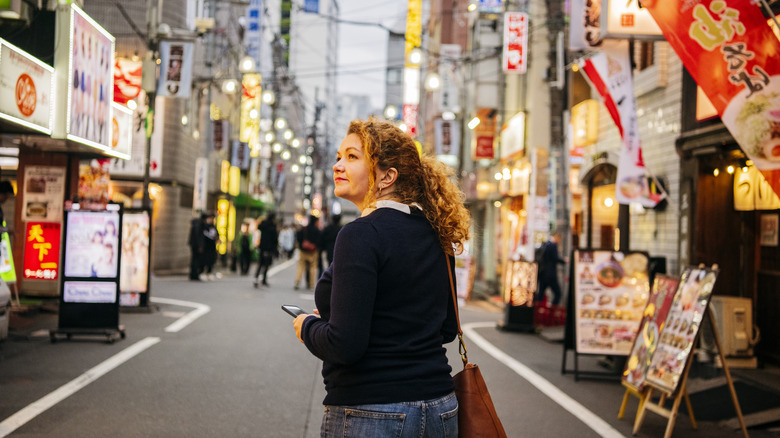It’s rare to hear the words “Japan” and “dangerous” in the same sentence. Japan has long had a reputation as a safe destination for solo and female travelers alike, consistently ranking among the safest countries in the world. Visitors flocking to the neon beacons of Tokyo, Kyoto’s classical shrines, and the serene shores bordering Okinawa can rest easy knowing that theft, violent crime, and homicide rates are extremely low. But even the safest places can contain hidden risks — and some of Japan’s are more dangerous than most.
The biggest is its geographical location. Japan’s 14,125 islands sit on the Ring of Fire, a tectonic belt home to three-quarters of the world’s volcanoes and responsible for 90% of the planet’s earthquakes. Seismic activity is so common in the country that children participate in disaster prevention drills from a young age. As if that’s not enough, there’s also the possibility of tsunamis and other natural disasters, not to mention all the typical risks posed by people and city life.
If you’re planning a trip to Japan any time soon, the locations on this list are by no means no-go zones. Incredible vacations are possible just about anywhere. However, it’s important to go into any trip armed with the knowledge of what could go wrong — even if it’s extremely unlikely.
Osaka
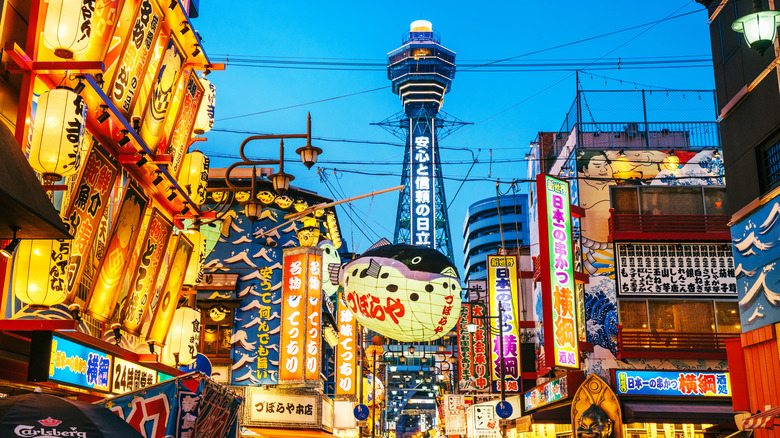
Osaka is known as “Tenka no Daidokoro,” aka the nation’s kitchen. That should tell you everything you need to know about the culinary delights that await you in the former capital, with its specialty of okonomiyaki — a savory pancake packed with cabbage and meat — standing out as a must-try. In short, Osaka is a foodie heaven. However, Osaka also has a reputation for being pretty dangerous (by Japan’s standards).
The city is burdened with the highest crime rates in the entire country and is infamously home to two prominent families involved in illegal activities, the Sakaume-gumi and Azuma-gumi, in the ward of Nishinari-ku. Osaka’s police previously admitted to covering up and not reporting over 81,000 offenses in a bid to fix its image. After a decade with the title of Japan’s most dangerous city, this led to Tokyo incorrectly being declared the more menacing urban area. While most of Osaka’s 81,000 hidden crimes were reportedly thefts — specifically bike thefts — it’s feared that it may also include muggings or murders.
Mount Ontake
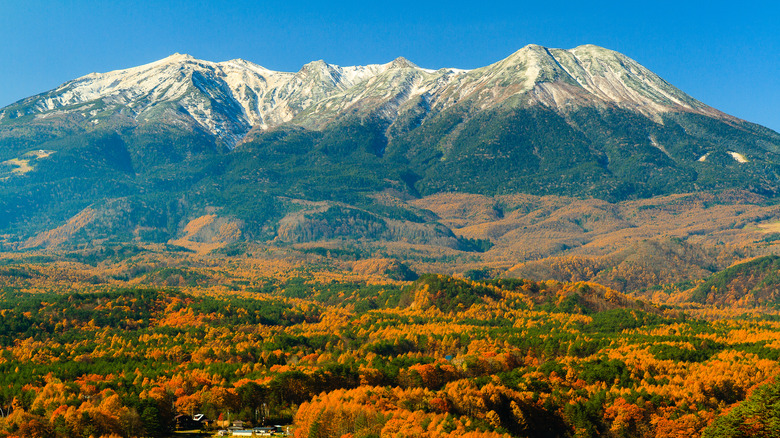
There are 111 active volcanoes in Japan, but only one eruption has proved fatal in the last 32 years. Said eruption occurred at Mount Ontake — the second-tallest volcano in Japan (after Mount Fuji) and a popular hiking spot northeast of Nagoya, attracting thousands of visitors annually with its stunning crater lakes, snowy peaks, and colorful autumn leaves.
Until 1979, Ontake was believed to be inactive. Then it erupted. Subsequent eruptions occurred in 1991 and 2007 before the stratovolcano exploded for a fourth time in 2014, with 250 hikers at its peak. While most were able to make the 10,062-feet descent unharmed, the volcano spewed rocks and poisonous hydrogen sulfide, killing 63 climbers (five of whose bodies were never recovered). While mild earthquakes had preluded the incident, scientists did not expect Mount Ontake to erupt. “There were no other signs of an imminent eruption, such as earth movements or changes on the mountain’s surface,” an official told The Guardian. “With only the earthquakes, we couldn’t really say this would lead to an eruption.”
The eruption served as a lesson of what scientists should look out for in the future, and new safety measures have been introduced in the years since. However, some are still concerned that Ontake could prove a danger to future visitors. “It would be physically difficult for everyone to take shelter if there is an eruption, which poses a significant risk,” a member of the Mountain Echo Association told The Asahi Shimbun.
Miyake-jima
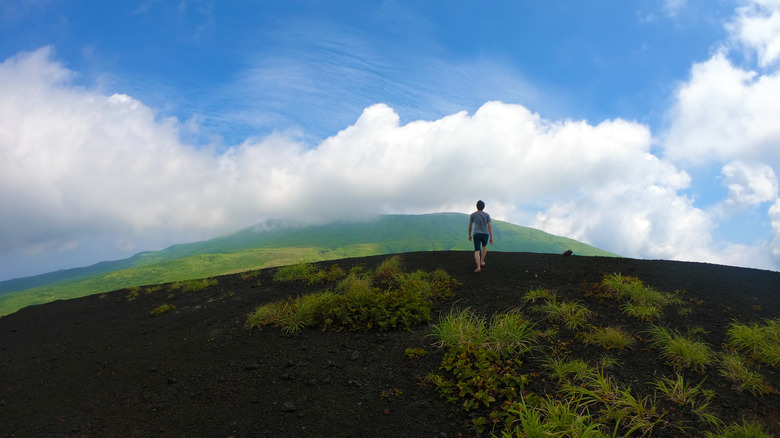
Zuchimo222/Shutterstock
At first glance, the Izu Islands are just like any other idyllic getaway. One of them, however, is more volatile than the others. Miyake-jima, one of the seven islands that sit in the Fuji Volcanic Belt, is home to Mount Oyama, an active volcano that has erupted 13 times over the past 890 years and led to the entire island’s evacuation in 2000.
For five years, Miyake-jima’s 3,600 residents lived in Tokyo until they were allowed back onto the island. While flights to and from the island were also banned for eight years, today, tourists can fly into Miyake Airport or access it via an overnight ferry — even though a steady stream of sulfur dioxide has flowed from Oyama since its last eruption. At one point, it was even mandatory to carry around a gas mask to protect yourself from the fumes, earning the island the extremely creative nickname of “Gas Mask Island.” While this is no longer the case, the air is still monitored for toxic gasses, and an alarm will sound if the concentration ever gets too high. Visitors are also encouraged to arm themselves with their own gas masks, with multiple shops selling them across the island, just in case.
Fujinomiya
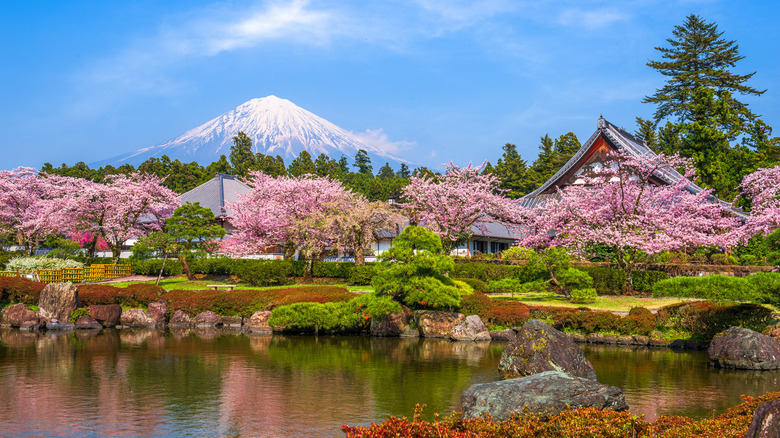
Sean Pavone/Shutterstock
The closest you can get to Mount Fuji without actually climbing Mount Fuji is Fujinomiya. Sitting in the shadow of Japan’s biggest peak, travelers often stop off in the city to visit Shiraito Falls, Fujisan Hongū Sengen Taisha — the shrine built to appease the troublesome volcano — or to use it as a rest stop before attempting to reach Fuji’s snowy peak.
It’s not hard to guess what makes visiting a city built around a stratovolcano potentially so dangerous. Mount Fuji hasn’t erupted since 1707 but is still considered active and well overdue. The catastrophic earthquake that hit Japan in 2011 caused pressure to start building under the volcano, and cracks appeared in the roof of Fuji’s magma reservoir, increasing the potential for an eruption.
When or if it happens, experts believe the lava flow will reach Fujinomiya in just two hours and sever its road and rail connections to Tokyo. Theoretically, any major eruption should be preceded by a public alert that will most likely come through to your phone. The evacuation plan received a major update in 2023, increasing the number of people required to leave their homes from 16,000 to 116,000 and advising that they do so on foot, not by car, if possible.
Chiba
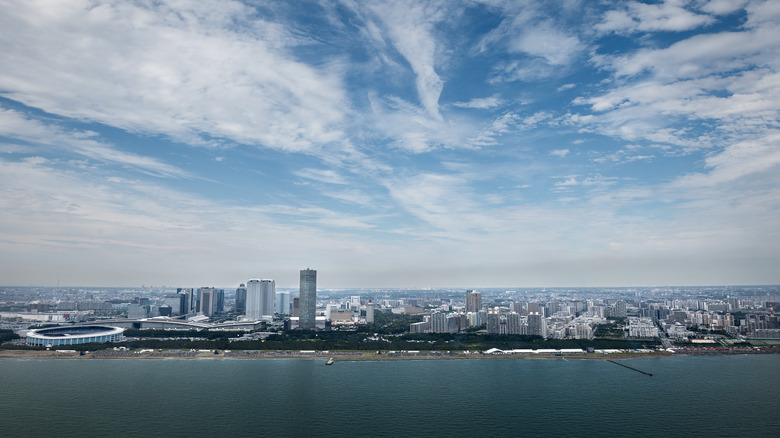
Extreme-photographer/Getty Images
Although the Chiba prefecture is mostly residential, it still attracts its fair share of visitors thanks to its peaceful vibes, sandy beaches, and scenic hiking routes. Most famously, the city of Urayasu is home to Tokyo Disneyland and Tokyo DisneySea, the two most-visited theme parks in all of Japan that have proven capable of luring in 30 million guests per year.
Like all of Japan, Chiba is at risk of earthquakes. What makes it even more dangerous, however, is its proximity to the Nankai Trough. Studies have suggested (as reported in The Japan Times) that the subduction zone is capable of producing not one but two earthquakes that constitute “The Big One” — potentially within the space of six hours – and the prefecture is thought to have an 85% chance of experiencing an intense quake in the next 30 years.
With three of its four sides surrounded by ocean, it’s also at an extremely high risk of tsunamis. The 2011 tsunami has led to the construction of higher sea walls to buy more time in case of the next emergency, and there are numerous evacuation sites dotted around the prefecture.
Mount Tanigawa
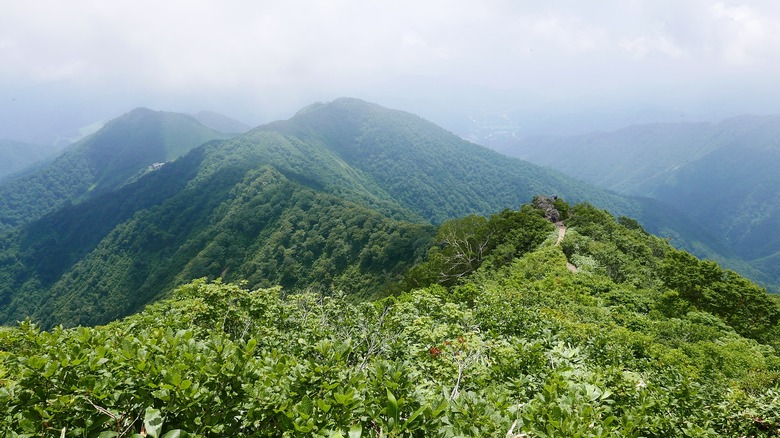
KKKvintage/Shutterstock
Considering the fact that it’s known as the “Mountain of Evil,” it shouldn’t come as much of a surprise that Mount Tanigawa makes a list of dangerous vacation spots. Its peak cycles through blankets of snow, seas of cherry blossoms, or a rainbow of autumn leaves, depending on the time of year, giving hikers plenty of motivation to reach the top — but over 800 visitors have died trying to do so over the past 100 years. For context, that’s over twice the number of lives claimed by Everest.
At first glance, Tanigawa should not pose such a threat. Its highest point reaches just 6,486 feet, which is nothing compared to the 12,388-foot-high Mount Fuji. What makes it such a treacherous climb is a combination of rugged terrain and challenging weather conditions. Tanigawa sits between the Gunma and Niigata prefectures, which is also where two different weather systems happen to meet, making for an unpredictable forecast. Climbers often get lost in the autumn when foliage is at its thickest and winter ascents can be particularly risky; heavy snowfall means Tanigawa is highly susceptible to avalanches. If you’re not an experienced hiker or would just rather not take the risk, the Tanigawadake Ropeway offers the same awe-inspiring views with none of the actual climbing.
Kabukicho
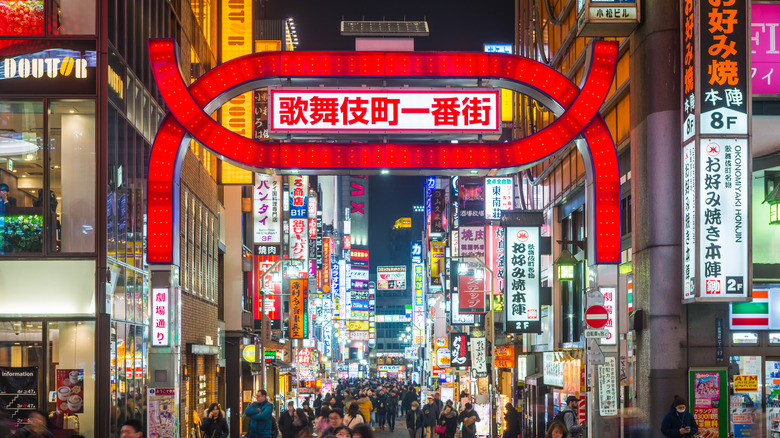
Fotovoyager/Getty Images
While Tokyo is mostly safe for tourists, it is the biggest urban area in the world, meaning it’s inevitable that at least one area would have a less-than-desirable reputation. In the case of the Japanese capital, that area is Kabukicho, which happens to simultaneously be a tourist hotspot and one of the biggest red-light districts in the world.
On the internet, Kabukicho is perhaps best known for the now-defunct Robot Restaurant — a dazzling dinnertime spectacular complete with acrobats and bot battles — and its gigantic, smoke-breathing Godzilla statue. It also tends to be one of the cheaper areas to stay in Tokyo, which is why it attracts so many unwitting tourists.
Within Japan, however, the area has a reputation for organized crime and yakuza activity. Although technically illegal, by night, Kabukicho is often packed with street hawkers hoping to lure in visitors with false promises of cheap drinks or hostesses with exceptional skill to encourage more spending, which is known as “bottakuri” (from the Japanese for “rip off”). It may not be dangerous in a life-threatening sense, but it’s best to go armed with the knowledge that Kabukicho can be pretty salacious.
Kagoshima
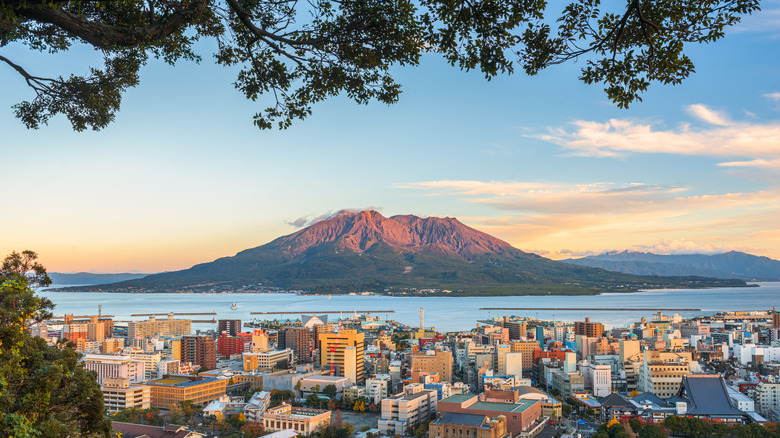
Sean Pavone/Shutterstock
The prefecture of Kagoshima is a hidden gem located on Kyushu Island, separated from the larger Honshū by just the Kanmon Straits. It’s a little out of the way compared to other major Japanese tourist destinations, but it is worth the trip through the Kanmon Railway Tunnel if you’re looking for a blend of the old and new.
Free of the skyscrapers that dominate Tokyo and Osaka’s skylines, visitors come to Kagoshima for its hot springs, locally brewed sake, and, of course, its volcano. Sakurajima is one of the most active volcanoes in the world and has been erupting almost constantly since 1955. While it’s safe from a distance, towns in Kagoshima have been evacuated multiple times due to volcanic activity. In 2022, residents were evacuated after Sakurajima started spewing large rocks almost 2 miles away, and authorities subsequently raised the eruption level to five for the first time ever. Major eruptions are relatively rare, but it’s recommended that you come armed with an umbrella to protect yourself from ash on Sakurajima’s more active days.
Hashima Island
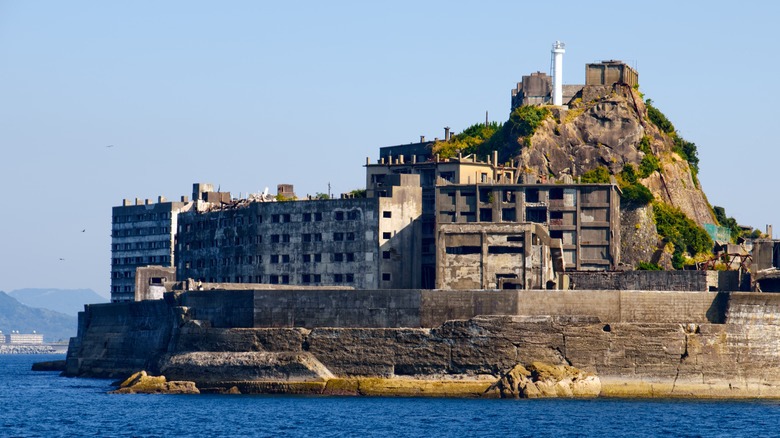
Grassflowerhead/Shutterstock
Visiting Hashima is a lot like visiting Alcatraz, albeit on the other side of the world. Not only is it only accessible as a part of a tour group, but it has a dark history that precludes its total abandonment in 1974. From the 1930s to the end of World War II, conscripted Korean citizens and Chinese prisoners of war were forced into construction and mining here under dangerous conditions (something Japan continues to deny to this day), leading to the deaths of anywhere between 130 and 1,300 workers.
Today, the island is a UNESCO World Heritage Site and a popular tourist site about 9.5 miles off the coast of Nagasaki. It even made it to the big screen as a filming location for the villainous Silva’s deserted island in Daniel Craig’s 007 flick “Skyfall.” However, visiting doesn’t come without its risks. Hashima was empty for decades, giving multiple typhoons free rein to damage the existing structures. With several buildings crumbling and on the verge of collapse, tourists are expected to stick to specific paths that have been designated as safe.
Roppongi
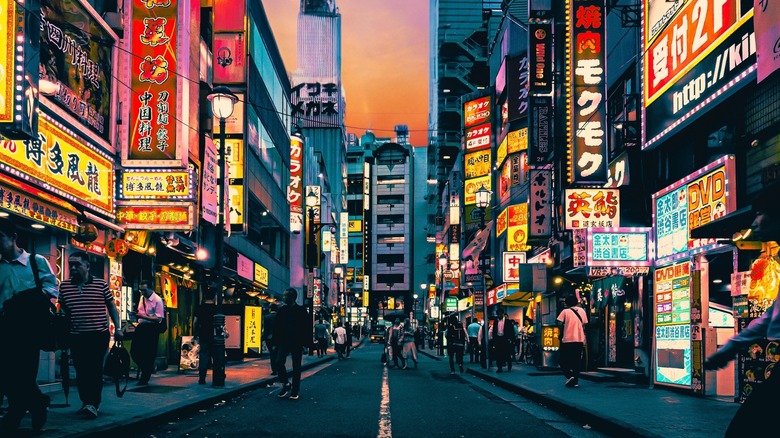
ephelele18/Shutterstock
In the daytime, Roppongi is a bustling hub of working professionals. At night, locals and tourists alike flock to the clubs and bars that have given the area its reputation as Tokyo’s party district. Whether you are a first-time visitor to the city or a Tokyo veteran, Roppongi will likely be on the itinerary.
Once upon a time, it also had a reputation as a hotspot for organized crime. Those connections have loosened in recent years, but Roppongi still gets a bad rep. In 2006, the U.S. embassy issued a travel warning for the area following a spate of drink-spiking and robbery incidents. A few years later, The Japan Times asked Tokyo residents to describe Roppongi in one word and received answers such as “crazy,” with one respondent explaining that “anything could happen in Roppongi. It always has the potential to be fun, but the possibility is also there for danger too.”
Fast forward to today, and Roppongi’s reputation remains mostly unchanged. A bar operator made headlines in 2020 after being arrested on suspicion of conning tourists out of 100 million yen ($679,000) a year. Visitors are advised to stick to main streets, avoid back alleys, and keep their wits about them if visiting the area at night — and, as always, remain cautious of touts trying to tempt you with good deals and free drinks. If it sounds too good to be true, it probably is.
Ota Jinja
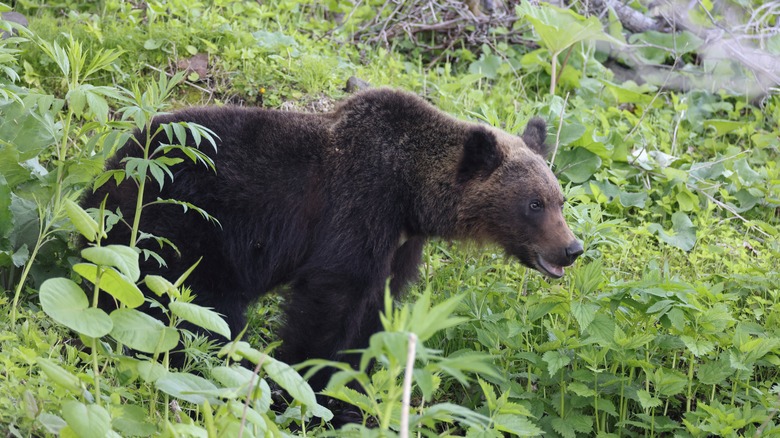
Frank Fichtmueller/Shutterstock
Tourists primarily visit Hokkaido — Japan’s northernmost main island — for its volcanoes, hot springs, stretches of green foliage, and ancient sites like the Ōta Jinja shrine. The latter consists of multiple structures built nearly 600 years ago, nestled into the rockwork of a mountainside. Making the climb gives you a bird’s eye view of the Sea of Japan, but it also comes with so much risk that it’s been dubbed the “most life-threatening” shrine in the country, per The Asahi Shimbun.
If you do choose to make your way up to Ōta Jinja, you’ll need to contend with a stairway so steep that a rope has been installed to aid you along the way. Once you reach the top, you also have to scale a massive rock with the help of iron ring chains. Unsurprisingly, multiple accidents have occurred over the years, especially when the weather is wet.
Intrepid travelers should also be cautious of falling rocks and the area’s increasingly confident population of Ussuri brown bears. The island’s population has doubled since the 1990s, bringing it to nearly 12,000 despite an annual hunting season. Sightings of the fearsome creature have surged across Hokkaido in recent years, with a fisherman killed in a bear attack at Lake Shumarinai as recently as May 2023. “Understand that there are a lot of bears in Hokkaido,” Tadayoshi Takeda, a government official responsible for dealing with Hokkaido’s bears, told The Japan Times. “There is always a risk of running into one.”
Numajiri Motoyu
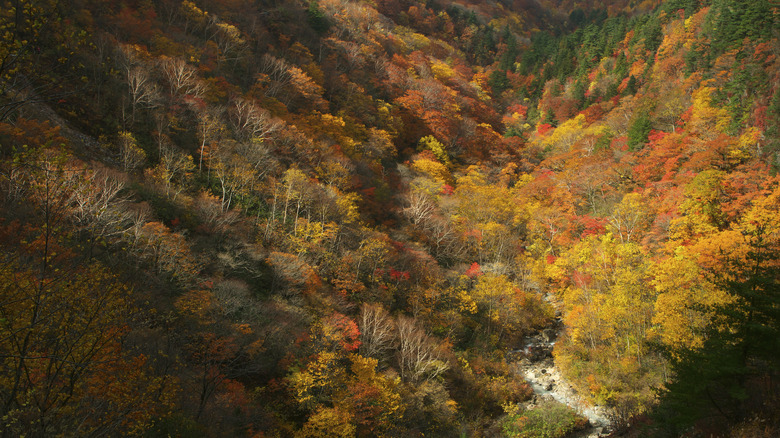
KPG-Payless2/Shutterstock
There are plenty of downsides to Japan’s status as a volcanic archipelago, but hot springs aren’t one of them. Thanks to its geological location, the country is blessed with over 27,000 natural springs – many of which are used as public bathing facilities or “onsens.” The biggest of the bunch is Nakanosawa Numajiri Onsen, which produces the highest volume of hot spring water in all of Japan.
Hopeful bathers flock from all over the world to take a dip in the spring’s source, Numajiri Motoyu. Its waters are extremely acidic but safe to enter — in fact, many believe they have healing properties. However, reaching them isn’t easy. Visitors need to trek through rough terrain and quite literally cross a volcano to get there.
Beautiful though this hike may be, it requires a trained guide as the volcano sporadically emits poisonous gasses. Trying to go solo and wing it isn’t wise, considering there have been fatal cases of visitors attempting to do so without a professional who can test the air and confirm if it’s safe.

